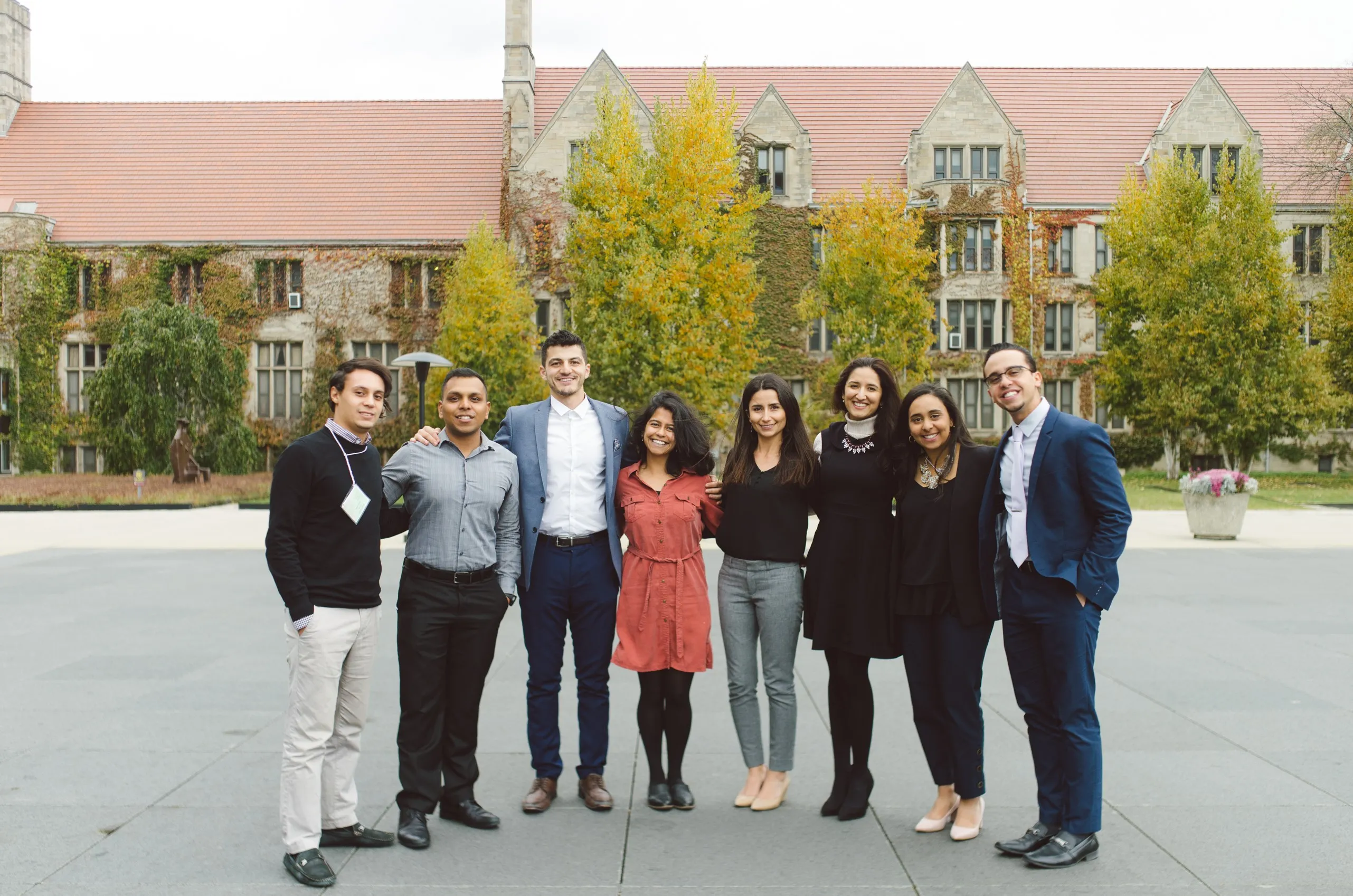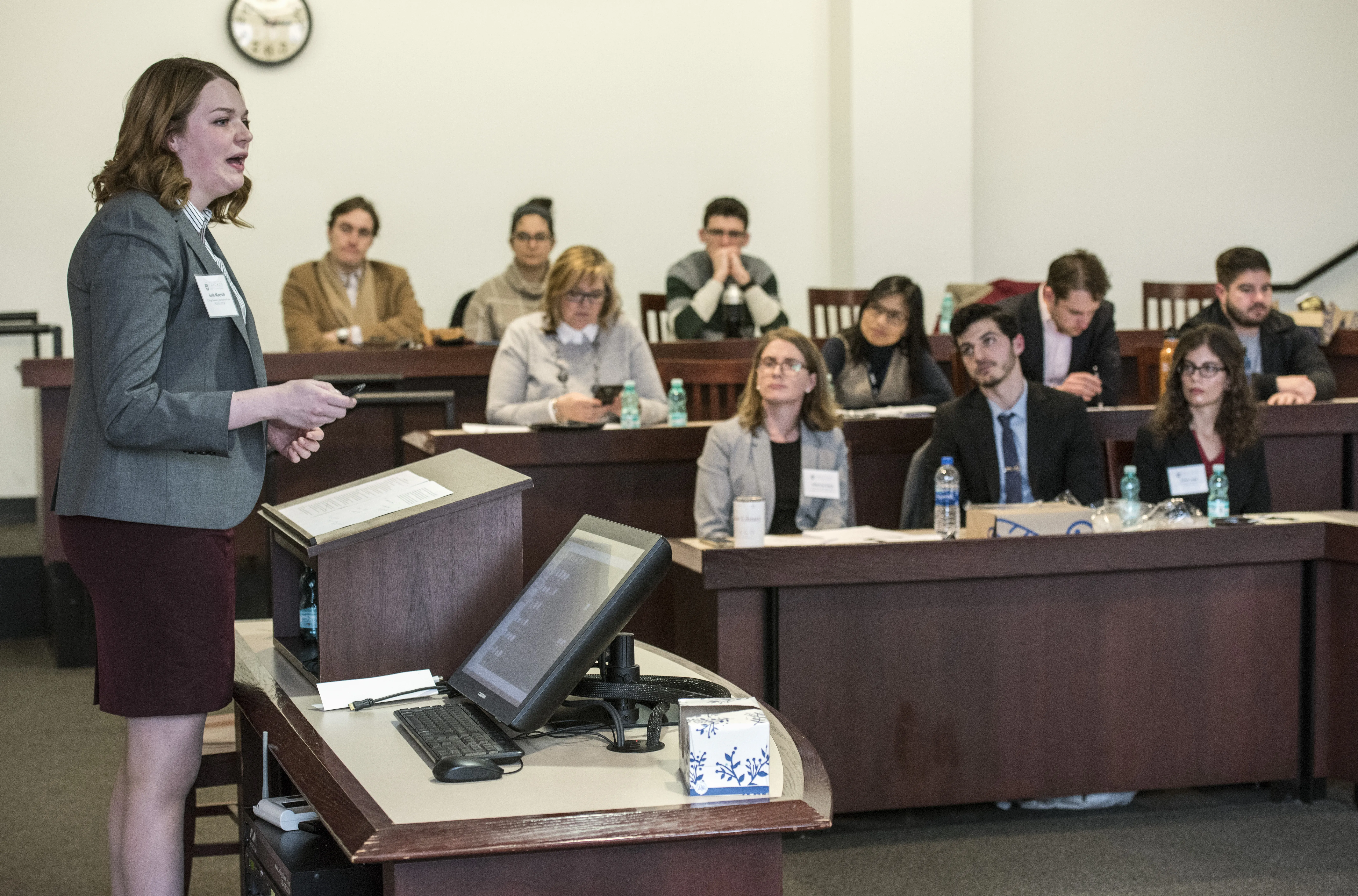Emphasizing Intersectionality at the Law School
“So, who’s heard of intersectionality?”
I looked around the room, waiting to see if any hands would rise. It was a Monday in late November; finals were in two weeks, and exam anxiety had begun. Still, dozens of people had joined me in Classroom V to listen to Jenn M. Jackson, a doctoral candidate in the University of Chicago’s Department of Political Science, speak at a lunch talk titled “Intersectionality 101.” But Jackson wasn’t going to let the gathered students, faculty, and administrators sit quietly listening. She sensed the room’s uniform reluctance to speak and expanded upon her initial question: “Or, what do you think about when you think ‘intersectionality’?”
Arms began to shoot up. “Identities.” “Oppression.” “Building inclusive movements.” Jackson listened, jotting down our words on the whiteboard. She drew a large circle around the word “intersectionality” and added each phrase we called out as branches stemming from the central term. This exercise felt unusual. I’ve attended countless lunch talks at the University of Chicago Law School, with fantastic speakers of varied backgrounds lecturing for an hour as students tuck in on provisions. Most lunch talks left some time for questions at the end; rarely did they require audience participation.
However, this was not an ordinary lunch talk. In the spring of 2018, a student organization known as the Women’s Advocacy Project completed a one-year research project and published a report titled Speak Now: Women, Education, and Achievement at the University of Chicago Law School. The project prompted important dialogues about gendered experiences at the Law School, and when subsequent funds were granted to continue this conversation, I knew I wanted to broaden the discussion with an intersectional lens. After all, no discussion of gender issues is three-dimensional without also involving race, class, sexuality, religion, ability, and the other facets of identity that are intrinsically part of our experiences.
An enormous number of student organizations came together to co-sponsor “Intersectionality 101,” the first in a three-part, yearlong series about how identities intersect in systems of power and marginalization. Twelve affinity and identity-based groups joined in hosting Jackson: the Asian-Pacific American Law Student Association, Black Law Student Association, Latinx Law Student Association, South Asian Law Student Association, Southwest Asian and North Afrikan Law Student Association, Christian Law Society, Dallin H. Oaks Society, Jewish Law Students Association, Muslim Law Students Association, First Generation Professionals, Law Women’s Caucus, and OutLaw.
During the talk, Jackson challenged us to think about how intersectionality applies to our own lives. One student said she wasn’t sure that it did. Another commented that only certain identities are visible: we can see race and age, but other characteristics remain inconspicuous. Together, we traveled through the brief history of intersectionality’s roots, from the Combahee River Collective in 1977, to Kimberlé Crenshaw’s seminal article published in The Legal Forum in 1989, to more recent contributions to legal scholarship.
We also considered how different identities have been historically situated in proximity to power. Drawing four hierarchical buckets on the board, Jackson asked us to think about which identities were closest to and furthest from political power. Again, silence took the room. Before students slowly began to fill the buckets, we acknowledged that it felt awkward and even unacceptable to sort people in this manner. We can’t simply situate ‘white, wealthy, able-bodied men’ at the top and ‘women and people of color’ at the bottom—such positioning excludes many and ignores the nuances of lived experiences. However, we agreed that in order to elevate the group farthest from power, some power would have to be redistributed. Does such redistribution take power away from those closest to it? There would still be a plethora remaining, but any loss of control is still a loss.
Toward the end of the talk, Jackson continued to break tradition by inviting students to split into small groups to discuss how intersectionality applies to our lives. Groups then shared their discussions of quota systems meant to increase diversity, incorporating intersectionality into journal articles, and more. Jackson ended our session with a two-minute reflection paper, where participants noted both the most understandable elements of the lunch talk, and the most challenging. We thought about how to apply what we learned to our personal and academic lives, and we agreed to engage with the most challenging issues after the talk came to a close.
Law does not operate in a void, and law is not objective. Innumerable books and studies have documented the disparate treatment that historically marginalized individuals have suffered in their interactions with the law. An intersectional approach assists in considering why groups of people experience the law differently.
Talking about race, gender, ability, and other elements of identity can be uncomfortable. No one wants to say the wrong thing, and some are reluctant to acknowledge differences at all. But on that November afternoon, we committed to having difficult conversations about intersectionality, and I believe that’s a pretty good place to start.
The next installment of the Intersectionality Series will be on Wednesday, February 20th. Details forthcoming.



